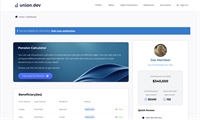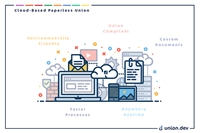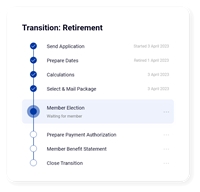22Nov
Navigating ADA Compliance for Union Websites: Ensuring Inclusivity in the Digital Space
In an era where digital accessibility is recognized as a fundamental right, union websites play a crucial role in ensuring that information and resources are accessible to all members, including those with disabilities. The Americans with Disabilities Act (ADA) mandates that websites be accessible to individuals with disabilities, and unions must strive to create an inclusive online environment. Let's delve into the importance of ADA compliance for union websites and explore key strategies to enhance accessibility.
The Significance of ADA Compliance for Union Websites:
-
Equal Access to Information:
- ADA compliance ensures that union websites are designed to provide equal access to information and services for all members, regardless of their abilities. This is essential for fostering inclusivity and ensuring that every member can engage with union resources.
-
Legal Requirements and Avoidance of Litigation:
- ADA compliance is not just a moral imperative; it is also a legal requirement. Failing to meet ADA standards may expose unions to legal risks and potential lawsuits. By proactively embracing ADA compliance, unions can mitigate legal challenges and demonstrate their commitment to inclusivity.
-
Expanded Member Reach:
- An ADA-compliant website broadens the reach of union communications. Members with disabilities, such as visual or auditory impairments, can engage more effectively with online content when websites are designed with accessibility in mind.
-
Enhanced Reputation and Member Trust:
- Prioritizing ADA compliance enhances the reputation of unions as advocates for social justice and equal access. Members are more likely to trust an organization that values inclusivity and actively works to remove barriers for individuals with disabilities.
Key Strategies for Achieving ADA Compliance:
-
Accessible Design and Navigation:
- Design union websites with accessibility in mind. Ensure that navigation is intuitive, headings are properly structured, and content is easily readable. Provide alternative text for images to make visual information accessible to screen readers.
-
Captioned Multimedia Content:
- Include captions for videos and transcripts for audio content. This ensures that members with hearing impairments can access multimedia materials, promoting a richer and more inclusive online experience.
-
Keyboard Accessibility:
- Ensure that all functionalities of the website can be navigated using a keyboard alone. This is critical for individuals who rely on keyboard navigation rather than a mouse.
-
Text Resizing and Readability:
- Allow users to resize text without loss of content or functionality. Choose font styles and colors that enhance readability for individuals with visual impairments.
-
Forms and Interactive Elements:
- Design forms and interactive elements with accessibility in mind. Provide clear instructions, ensure proper labeling of form fields, and enable users to complete tasks without relying solely on a mouse.
-
Regular Accessibility Audits:
- Conduct regular accessibility audits to identify and address potential barriers. Utilize automated tools and, importantly, involve individuals with disabilities in testing to gather valuable user feedback.
-
Educate Website Administrators:
- Train website administrators on ADA compliance best practices. Equip them with the knowledge and skills needed to maintain accessibility standards when updating content or adding new features.
Looking Ahead: Building a More Inclusive Future
ADA compliance for union websites is not just a regulatory requirement; it is a commitment to creating an inclusive and equitable space for all members. As technology continues to evolve, unions should stay informed about the latest accessibility standards and proactively embrace changes to ensure that their digital presence remains accessible to everyone. By prioritizing ADA compliance, unions can foster an environment where every member, regardless of ability, can fully engage with the union's mission, resources, and community. In doing so, unions not only meet legal obligations but also embody the principles of equality and social justice that lie at the core of their mission.
How Union.dev Can Help
Reach out to info@union.dev or +1 877 569 1999 to request a free ADA website accessibility audit from the Union.dev team.
Related

PRS is a modern cloud-based platform that allows unions or fund offices to bring their pension admin...
Read More >

Discover the features of our defined benefit pension administration member self service portal to ma...
Read More >

In today's rapidly evolving workplace landscape, modern union management is more important than ...
Read More >

The world is moving towards a cloud-based, paperless approach.
Read More >

Discover the simplicity and efficiency of retiring a member using Union.dev's Pension Reporting ...
Read More >

Leaders turn to new member management platforms for unions to unite their members and optimize their...
Read More >